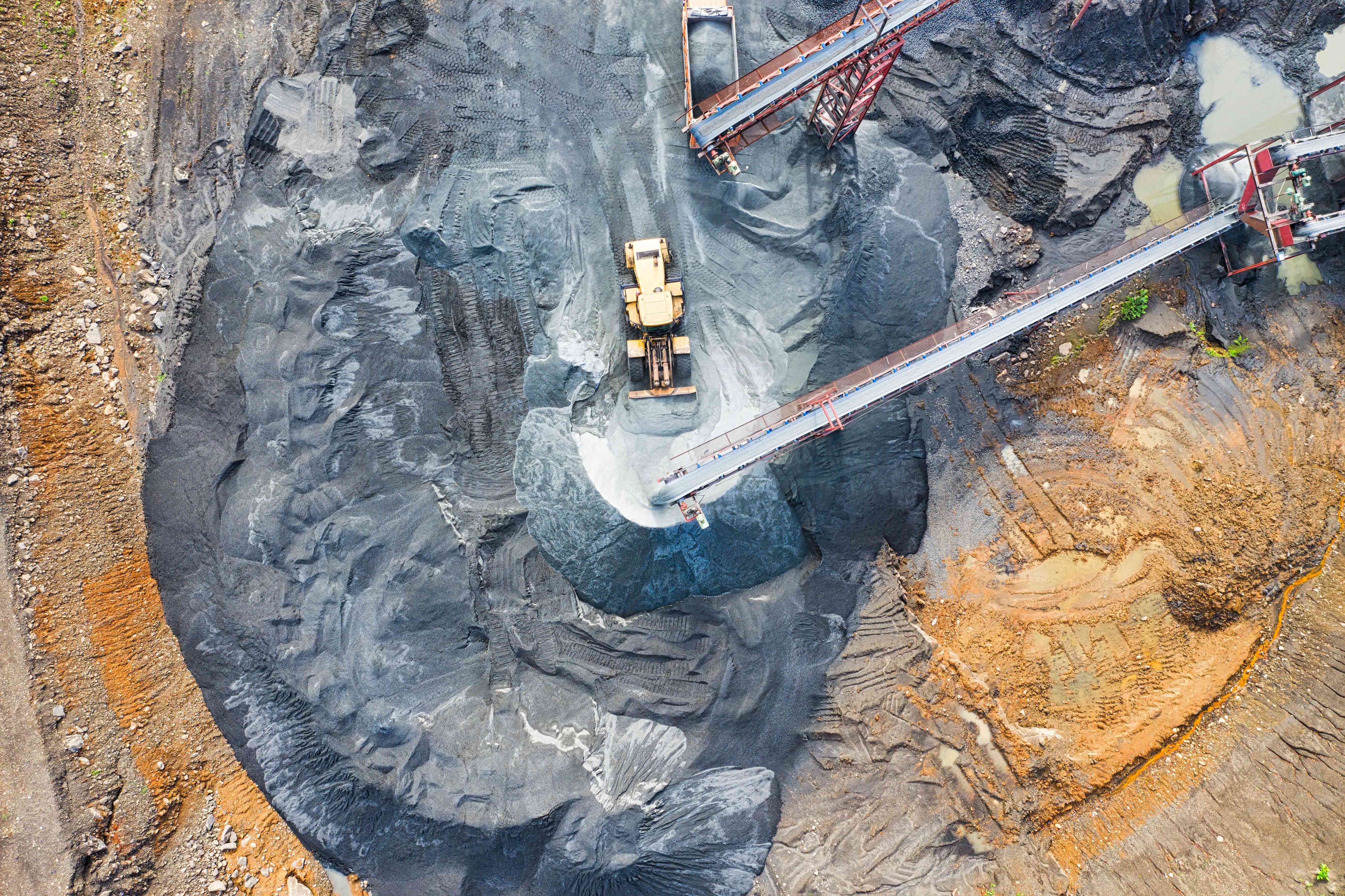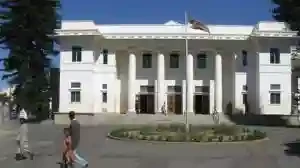
THE current rush for critical raw materials by developed countries and China in Africa reminds me of the Bourbon monarch in France, who briefly came back to power after Napoleon’s rule from 1815 to 1830.
He accused his subjects of having learnt nothing from the revolution and forgot nothing about monarch privileges which resulted in their short rule.
What are critical raw materials?
Critical raw materials (CRM) are materials essential for various industries and technologies. Examples include lithium (used in batteries), cobalt and gallium (for solar panels); rare earths are critical components of permanent magnets used in wind turbine motors, and titanium (used in aerospace).
With the global quest for CRMs, Africa is at a pivotal crossroads marked by opportunity and peril. The echoes of past colonial imprints and contemporary global demands converge, shaping Africa’s role in the emerging landscape of resource allocation and economic transformation. With recollections from the Berlin Africa Conference, the colonisation period, and the transformation of the Middle East, one would have thought that Africa would have learnt a thing or two, but alas, the continent seems to be singing from the same old hymn book of yesteryear. Africa has learnt nothing and forgotten everything.
However, Africa now faces a unique opportunity in the global push to decarbonise energy and reduce greenhouse gas emissions which aligns with the Paris Agreement. This international push allows Africa to uplift its citizens and foster continental development. The irony should not be lost that as others try to decarbonise all sectors, Africa is yet to provide power to its growing population.
The EU strategy
The European Union (EU) has taken decisive steps to limit global temperature rise to below 2 degrees Celsius. The critical raw material strategy, a cornerstone of the 2021 Green Deal, aims to secure essential resources and achieve its climate targets. The EU recognises that reliance on third-country raw materials amid surging global demand driven by digital and green economies renders its supply chains vulnerable. The EU has learned from its past and it is fortifying its resilience.
- The brains behind Matavire’s immortalisation
- Young entrepreneur dreams big
- Chibuku NeShamwari holds onto ethos of culture
- Health talk: Be wary of measles, its a deadly disease
Keep Reading
The EU’s critical raw materials strategy is premised on five key pillars. First, the plan outlines a set of actions, including a measurable reduction in dependency on external supplies and a deadline to comply by 2030.
Second, the strategy aims to build the EU’s capacity by strengthening its raw material value chain. This strategy includes redoubling national exploration efforts and creating an enabling environment for mineral exploitation.
Thirdly, the strategy intends to improve the EU’s ability to withstand disruptions in the supply chain due to geopolitical factors or natural hazards. Building up stock reserves is identified as one such action.
Fourth, the strategy realises the need to invest in innovation and research. A raw materials academy is planned to promote skills relevant to the workforce in CRM supply chains.
Finally, the strategy proposes a circular critical raw materials economy. The EU hopes to achieve this by encouraging CRM recovery from extractive waste facilities. As a sustainability champion, the EU also plans for certification schemes that increase the sustainability of critical raw materials on the EU market.
The EU adopted the Green Deal against a budget of over 1 trillion euros. The European Green Deal aims to transform the European economy by mobilising substantial funds for sustainable investments, driving the transition towards a greener and more resilient future. They hope to achieve without slowing down their economies. But CRMs, such as renewable energy, are essential for achieving the Green Deal’s goals. CRMs like lithium, cobalt and gallium are crucial for batteries in electric vehicles and renewable energy storage.
Since 2011, the EU has come up with five lists of critical raw materials to underscore the importance of the matter. The 2011 list started with 14 minerals and has moved currently to 70 candidate raw materials, comprising 67 individual materials and three materials groups: 10 heavy and five light rare earth elements, and five platinum group metals (PGMs).
The Ukraine-Russian conflict and COVID-19 impacts on supply chains have already vindicated the EU strategy to cut down its dependency on third-country supplies and broaden its sources of CRM as a positive step.
China strategy
China’s approach to CRM is akin to the dramatic entrance of Hamlet’s father’s ghost in Shakespeare’s play. While not spectral, China’s dominance in the CRM sector is undeniably remarkable. Influenced by global discussions on criticality, China has meticulously assessed the strategic importance of mineral raw materials. In 2016, the country established an official catalogue of 24 “strategic minerals”. Deng Xiaoping's famous quote, “The Middle East has oil, China has rare earths”, merely scratched the surface. China’s CRM strategy has evolved into a centralised knowledge hub for CRM purification. Even when alternative deposits are mined elsewhere, a significant portion of processing occurs within China — akin to an age-old secret recipe passed down through generations.
Some analysts assert that China is 15 years ahead of the EU in mining and processing critical raw materials essential for achieving net-zero goals. China learnt something and forgot nothing.
Other nations strategies
Other nations have also developed CRM strategies to strategically position themselves for industrial survival. The United States also focuses on securing critical minerals and reducing import dependence. Japan’s Strategy for Ensuring Stable Supplies of Rare Metals addresses its reliance on foreign sources. Australia relies on critical minerals like lithium, rare earths, and cobalt. Even India has policies promoting domestic production of critical raw materials. They all have learned something.
Lessons from Opec
Let's take a step back to the 1950s and 1960s when many countries in the Middle East and other regions possessed another critical raw material: oil. The oil demand was global and these Middle East nations sought greater control over their oil resources. Their primary goal was to ensure fair compensation for oil extraction. Additionally, they aimed to influence oil prices in a way that aligned with the interests of oil-exporting nations. This collective effort led to the establishment of Opec (Organisation of the Petroleum Exporting Countries).
Opec was formed to collaborate and co-ordinate policies among oil-producing countries. These nations gained increased bargaining power and influence on the global oil market by joining forces. The impact of Opec’s actions reverberates through history. Today, most Opec countries boast gross domestic product (GDP) per capita figures in the four-figure range. Therefore, the Middle East countries learned something.
African critical raw materials strategy: A vital consideration
Now, let's shift our focus to Africa. The continent houses over 1,3 billion people across 54 countries and faces significant challenges. Over half its population needs access to reliable electricity and two in five adults still need to be literate. Health issues, including high rates of infectious diseases like malaria, HIV/Aids and tuberculosis, further burden this continent. Additionally, many struggle to achieve food self-sufficiency, leading to malnutrition and related health concerns.
The challenges Africa faces are in stark contrast to its resources. For instance, approximately 63% of the world’s cobalt, a crucial component in batteries, is extracted in the Democratic Republic of Congo, while 60% is refined in China. Additionally, South Africa supplies 71% of the EU’s platinum group metals. Africa possesses a wealth of other critical and rare earth minerals essential for the global energy transition. In fact, 27 countries in Africa have been characterised as resource rich according to IMF data. Other materials such as blue hydrogen and gas are not included on the EU CRM list but following the Ukraine-Russia conflict they may as well be added to the list given how critical they have become to the EU.
With this abundance in mind, Africa needs a clear CRM strategy to fully capitalise on the energy transition and alignment with the goals of the Paris Agreement while spearheading sustainable development on the continent.
Interestingly, the EU has forged strategic agreements with several African nations, including Zambia and the Democratic Republic of Congo. These partnerships focus on integrating Sustainable Value Chains and ensuring responsible mineral sourcing. However, a critical question arises: How does a key CRM supplier overwhelmed with buyers tie itself to a single client? The US with its Inflation Reduction Act is on the market, the Chinese are on the hunt for 24 specified raw materials and the EU has 70 critical raw materials on its menu.
Moreover, can a small country like Zambia negotiate successfully against a regional block with 27 States? Predictably, such negotiations will likely be staked heavily in favour of the regional bloc. Others even predict that such arrangements will end in tears.
The continent has several long-term policies, such as Agenda 2063 and trade agreements like the African Continental Free Trade Area. Africa must ensure that Africa’s CRM strategy aligns seamlessly with these policies. Otherwise, it risks reaching 2030 and realise it has exhausted the resources it requires to achieve the 2063 goals.
As the source region for many CRM, Africa faces a critical responsibility. Sustainable resource extraction and extensive remediation efforts are essential to preserve these resources for future generations beyond 2063. The strategy must also address infrastructural development to facilitate raw material extraction and enhance interconnection among African States, boost intra-African trade and promote tourism. While the full scope of the CRM strategy cannot be outlined here due to space limitations, thoughtful planning and collaboration are essential for Africa’s sustainable development.
In the abundance of its resources lies the promise of Africa's transformation. It is a promise that beckons not only to the present but resonates with the aspirations of future generations.
Africa, therefore, stands at the threshold of history, poised to chart a course that will shape its destiny and resonate across the global stage. The current slump in lithium prices of up to 80% is a solid motivational factor for Africa to consider lessons from Opec. If the prices remain subdued, it is clear who benefits from the predicament. The buyer has never been known to say your product is too affordable.
Africa needs to seize this moment with clarity of vision and conviction of purpose, for the path to prosperity is not found in complacency, but in courage, collaboration and unwavering resolve. Africa’s journey towards a raw material strategy is not just a matter of policy but a testament to the continent's resilience, resourcefulness, and relentless pursuit of a brighter tomorrow. It would be a great travesty of justice if, after contributing heavily to the energy transition, Africa remains that continent filled with illiterate people, people without electricity, faces perennial health challenges, and has many of its citizens struggling to achieve food self-sufficiency. Indeed, Africa would have learned nothing and forgotten everything.
- Mitchell Mahachi, Phd Candidate in Climate Change and Urban ecosystems. May be contacted on mitchell.mahachi@web.de She writes in her capacity.










